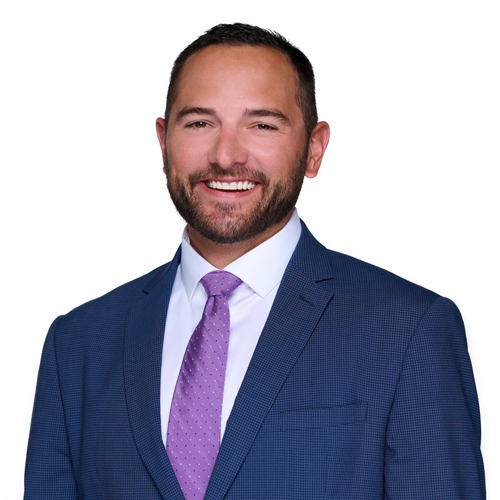Over a century ago, some of America’s wealthiest families faced a dilemma. Imagine a 1920s industrialist in Delaware, determined to secure his family’s fortune for generations. Back then, trusts were commonly used to pass wealth, but giving one trustee all the power felt risky. In response, Delaware pioneered an innovative solution: directed trusts.[1]This approach let the family split the trust’s management duties – for instance, the family’s trusted investment advisor could guide how assets were invested, while an independent trustee handled the paperwork. As a result, families had greater control over their estates and, most importantly, greater peace of mind.
What Is a Trust?
A trust is just a legal arrangement to manage money or property for someone’s benefit. You (the “grantor” or trustor) transfer assets to a trustee, who agrees to take care of those assets and eventually use them to benefit your chosen person or people (the beneficiaries). Think of it like a safety deposit box with rules: the trustee holds the assets “in trust” according to instructions you’ve laid out, such as when and how the beneficiaries receive them. For example, you might put your house or investments into a trust for your children – the trustee would manage those assets responsibly until the time comes to distribute them to the kids. The key players are straightforward: the grantor sets it up, the trustee manages it, and the beneficiaries get the benefits. By using a trust, you can bypass probate court, set conditions on gifts (like “pay for college at 18”), and generally ensure your wishes are carried out even when you’re not around. It’s one of the cornerstones of estate planning because it provides control, continuity, and care for your assets beyond your lifetime.
How Directed Trusts Work
Now, let’s introduce the star of our show: the Directed Trust. If a regular trust is like a car with one driver (the trustee), a directed trust is more like a carpool – it lets you share the controls among specialists. In a typical trust, the trustee calls all the shots, from investing the assets to deciding on distributions. In a directed trust, by contrast, you remove one or more powers from the trustee’s control and give those powers to someone else you trust.
That “someone else” is often called a trust advisor or trust director. For example, you can appoint an Investment Director to direct how the trust’s assets are invested, and a Distribution Director to guide or approve distributions to the beneficiaries. The trustee then follows these directions, focusing mainly on administration and compliance. Essentially, a directed trust is a team-based trust: each expert plays a specific position. This separation of duties is what enhances oversight – no single trustee has free rein over everything. You, as the trust’s creator, can handpick who manages what.
Importantly, a directed trust is still backed by legal safeguards. The people you empower – your investment or distribution advisors – typically must act in the trust’s best interest, just like a trustee would. They are fiduciaries, meaning they have a legal duty to be prudent and loyal to the beneficiaries . Meanwhile, the trustee is generally protected from liability when following the directions of these advisors (assuming everyone acts in good faith).
How Directed Trusts Work
From single driver to expert team management
Traditional Trust
Single Trustee
One driver controls everything:
- • Investments
- • Distributions
- • Administration
Directed Trust
Portfolio Strategy
Beneficiary Payments
Administration
Built-in Safeguards
- ✓ Fiduciary responsibility
- ✓ Legal compliance
- ✓ Checks and balances
Key Advantages
For instance, under Texas law, a trustee who follows an advisor’s investment instructions isn’t liable for the results, unless the trustee engages in willful misconduct.[2] Likewise, in Florida, which only adopted its Directed Trust Act in 2021, the rules spell out that a “trust director” (Florida’s term) can be given broad powers over investments, management, or other decisions, and the trustee won’t be on the hook for actions the director told them to take.[3]
In short, a directed trust lets you customize who controls what in the trust, while building in checks and balances. You might use one to ensure your long-time financial advisor continues to manage your portfolio inside the trust, or to let a wise family friend have a say in how and when your kids receive funds – all while a professional trustee handles the day-to-day legwork.
Why Directed Trusts Matter for Your Estate and Retirement Plan
Directed trusts offer practical benefits for business owners, high-net-worth families, and anyone with complex assets like equity compensation.
Directed Trusts for Business Owners
If you’re a business owner, think about the unique challenges in your financial, retirement, and succession planning. Your business might be your largest asset and legacy. With a traditional trust, you might worry whether a corporate trustee (say, a bank) truly understands your company or will run it the way you would. A directed trust can solve that: you could appoint a trusted business partner or advisor as a trust director to oversee the company shares or even manage the business within the trust.
This means that when you retire or pass the torch, the person with hands-on knowledge directs the trustee on business decisions. The trustee, in turn, handles the administrative details and ensures legal compliance, but doesn’t interfere with how the business is operated. The result is a smoother succession – your business plan stays aligned with your estate plan. In states like Florida and Texas,[2] the law explicitly allows this kind of arrangement, so a family business can be placed in a trust while you retain effective oversight through a director. [3] It’s a powerful way to keep your business thriving for the next generation without sacrificing the protections a trust provides.
Directed Trusts for HNW Families
For families with significant wealth or those holding equity compensation (like company stock or stock options), directed trusts can be equally game-changing. High-net-worth (HNW) families often work with a team of financial advisors, tax strategists, and attorneys. A directed trust lets you bring that team into the trust’s governance. For example, if you have a large concentration of company stock from your employer (common with tech executives or long-term employees with ESOs), a directed trust allows a knowledgeable investment advisor to continue managing those shares inside the trust.
They might decide when to sell, diversify, or hold based on market conditions and tax implications – all coordinated with your overall financial plan. Meanwhile, the trustee follows those expert directions and handles reporting and record-keeping. This ensures that your retirement plan (like drawing income from those stocks or options) and your estate plan (passing the remaining wealth to heirs) work in harmony. Without a directed trust, a generic trustee might feel compelled to liquidate or overly diversify a prized asset (to be “safe” or meet generic trust rules), which could clash with your strategy.
A Study of Directed Trusts
Consider the Johnson family, owners of a successful third-generation manufacturing business valued at $50 million. With three adult children and five grandchildren (ages 8-16), Mark Johnson wanted to ensure both business continuity and educational opportunities for future generations. Working with their advisors, they established a directed trust with three specialized roles: their long-time CFO serves as the Business Director overseeing company operations, their wealth manager acts as Investment Director for the trust’s non-business assets, and a corporate trustee handles administration and compliance.
Looking ahead twenty years, the directed trust structure proved transformative compared to traditional alternatives. Under the directed trust system, the business expanded to $120 million in value while maintaining family control, all grandchildren completed higher education debt-free, and the next generation seamlessly integrated into leadership roles under the Business Director’s mentorship.
With Directed Trust
- ✓ Specialized oversight maintains business growth trajectory
- ✓ Next generation receives targeted mentorship
- ✓ Investment strategy aligns with family goals
- ✓ Business expansion decisions remain nimble
- ✓ Educational and succession planning stay coordinated
Without Directed Trust
- ✗ Generic trustee may force premature business sale
- ✗ Family loses control over key decisions
- ✗ Rigid investment policies limit growth
- ✗ Business opportunities missed due to slow decision-making
- ✗ Fragmented planning leads to family conflicts
By contrast, without such specialized oversight, many similar family businesses face fragmentation through divided interests, suffer from rigid institutional trustee investment policies that force premature business sales, or lose a competitive edge when successive generations lack proper preparation for leadership. The Johnson family’s directed trust effectively bridged the gap between wealth preservation and business innovation, creating a multi-generational success story.
The Bottom Line: More Control, More Confidence
In summary, a directed trust can provide: greater control over how your assets are managed, specialized oversight by people who know your assets or family best, potential cost savings by unbundling services, and peace of mind that your wealth will be handled according to your wishes across the years.
For business owners, it means your company can continue to be guided by those who understand it deeply, even within a trust. For families, it means you can involve trusted confidants or professional advisors to safeguard your heirs’ futures. And for those with complex assets or equity compensation, it means tailoring the trust to fit those assets (not the other way around).
If you’re wondering how a directed trust might fit into your own plan, it’s a great time to take action. We’ll help you look at the big picture – from your business plan to your financial, retirement, and estate plans – and see how tools like directed trusts could potentially enhance your oversight and protection. Reach out today to set up a review, and let us help ensure that your legacy is not only preserved but also guided by the very hands you trust the most.
Sources:












